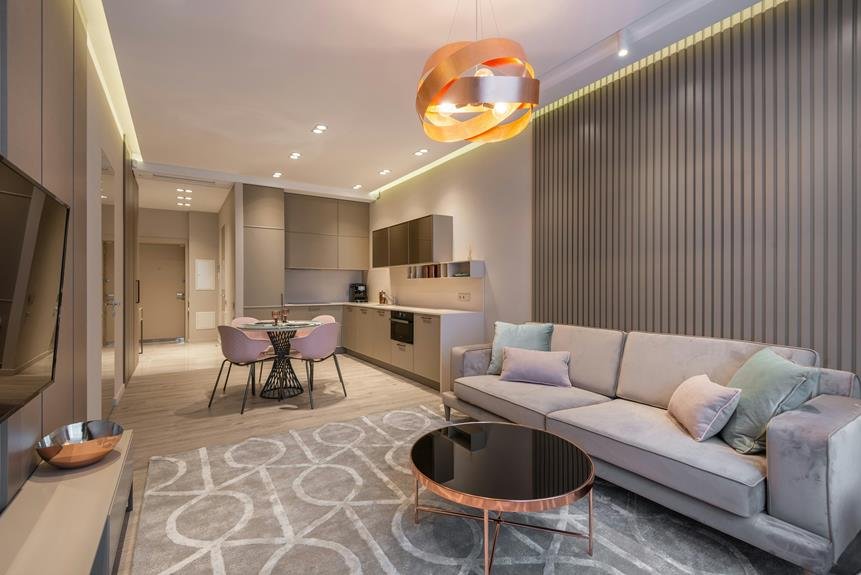
Scandinavian design remains a popular trend in furniture, blending functionality with timeless elegance. The clean lines, minimalist shapes, and use of natural materials like wood and leather create a versatile style for various interior aesthetics. Additionally, the emphasis on quality craftsmanship and durability ensures longevity in your furniture pieces. Explore how contemporary interpretations of Scandinavian design are pushing boundaries and redefining modern living spaces.
Origins of Scandinavian Design
The origins of Scandinavian design can be traced back to the early 20th century when designers in the Nordic countries sought to create simple, functional, and beautiful furniture pieces. Influenced by the harsh climate and natural landscapes of the region, Scandinavian design emerged as a response to the need for practical yet aesthetically pleasing furniture solutions.
During this time, designers such as Alvar Aalto, Arne Jacobsen, and Hans Wegner began experimenting with materials like wood, leather, and steel to craft minimalist yet sophisticated furniture items. These designers emphasized clean lines, organic shapes, and the use of natural materials to bring a sense of warmth and coziness to their creations.
The simplicity and functionality of Scandinavian design quickly gained popularity not only in the Nordic countries but also worldwide. Its emphasis on craftsmanship, sustainability, and timeless elegance continues to influence contemporary furniture trends, making Scandinavian design a timeless and enduring style choice for many homeowners and interior designers alike.
Key Characteristics of Scandinavian Design
Embodying simplicity and functionality, Scandinavian design showcases a harmonious blend of form and function in furniture aesthetics. Clean lines, minimalist shapes, and natural materials like wood and leather are hallmarks of this style. Functionality is prioritized, with pieces often featuring multifunctional elements or storage solutions to maximize space efficiency.
Another key characteristic of Scandinavian design is its focus on light and nature. Light colors such as whites, soft grays, and light blues are commonly used to create bright, airy spaces that reflect natural light. Additionally, incorporating elements of nature like indoor plants or natural textures helps bring a sense of the outdoors inside.
The concept of hygge, which emphasizes coziness and comfort, is also integral to Scandinavian design. This is achieved through the use of soft textiles like wool or sheepskin, as well as warm lighting and inviting furniture arrangements that promote relaxation and well-being. Overall, Scandinavian design embodies a timeless elegance that continues to resonate with modern furniture trends.
Popularity of Scandinavian Design in Furniture
With its timeless elegance and focus on functionality, Scandinavian design has gained immense popularity in the world of furniture. The clean lines, minimalist approach, and emphasis on natural materials have resonated with consumers seeking simplicity and sophistication in their living spaces. Scandinavian furniture designs are known for their practicality without compromising on style, making them a versatile choice for various interior aesthetics.
The popularity of Scandinavian design in furniture can be attributed to its ability to create spaces that feel both cozy and modern. The neutral color palettes and understated elegance of Scandinavian furniture make it easy to incorporate into existing decor schemes. Additionally, the durability and quality craftsmanship associated with Scandinavian design have further solidified its place in the market.
Whether you prefer a more traditional or contemporary look, Scandinavian furniture offers a wide range of options to suit different tastes. From sleek, mid-century modern pieces to cozy, hygge-inspired furnishings, Scandinavian design continues to captivate furniture enthusiasts worldwide.
Contemporary Interpretations of Scandinavian Design
As Scandinavian design continues to evolve, contemporary interpretations in furniture are pushing boundaries and redefining modern living spaces. Designers are blending traditional Scandinavian elements with new materials, textures, and forms to create pieces that honor the roots of the design movement while embracing a more eclectic and innovative approach.
One key aspect of contemporary Scandinavian design is the emphasis on sustainability and eco-friendliness. Furniture pieces are being crafted with a focus on using renewable resources and environmentally friendly manufacturing processes, aligning with the modern consumer's desire for ethical and sustainable products.
Additionally, contemporary interpretations of Scandinavian design often feature minimalist aesthetics with clean lines, organic shapes, and a neutral color palette. This simplicity not only creates a sense of calm and serenity in living spaces but also allows for versatility in styling and decorating.
Innovative use of technology is also a prominent feature in modern Scandinavian furniture design, with pieces incorporating smart functionality and integrated features to enhance the user experience. These contemporary interpretations of Scandinavian design aren't only practical and functional but also serve as artistic statements that reflect the evolving nature of the design movement.
Future Outlook for Scandinavian Design
What lies ahead for the future of Scandinavian design in furniture trends? As we look forward, Scandinavian design is expected to continue its influence in the furniture industry. The timeless appeal of clean lines, minimalist aesthetics, and functional designs will likely remain sought after by consumers who appreciate the blend of form and function.
In the coming years, we can anticipate a further evolution of Scandinavian design, with designers exploring new materials, colors, and textures while staying true to the core principles of simplicity and practicality. Sustainability will also play a significant role, with eco-friendly practices and materials becoming more prevalent in Scandinavian furniture production.
Moreover, technology integration is projected to become a key aspect of future Scandinavian designs, as smart furniture and innovative solutions cater to the needs of modern living spaces. This fusion of traditional craftsmanship with contemporary advancements is set to shape the direction of Scandinavian design trends, ensuring its relevance and popularity in the furniture market for years to come.




